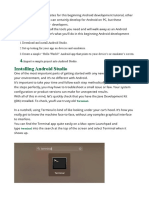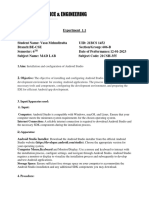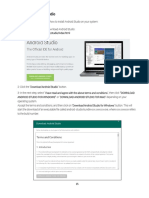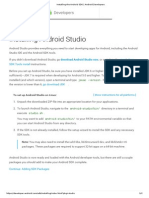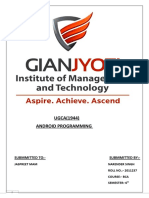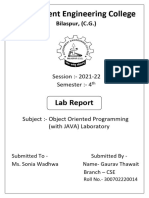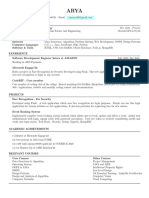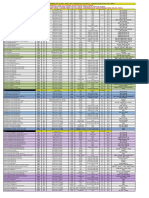0% found this document useful (0 votes)
7 views21 pagesAndroid Chapter 2
This document provides a comprehensive guide on setting up Android Studio, the official IDE for Android app development, which replaced Eclipse in 2015. It details the installation process, including configuration settings and environment variable adjustments for Java. The document concludes with an agenda for the next lecture, focusing on developing and configuring the first app.
Uploaded by
Alok GuptaCopyright
© © All Rights Reserved
We take content rights seriously. If you suspect this is your content, claim it here.
Available Formats
Download as PDF, TXT or read online on Scribd
0% found this document useful (0 votes)
7 views21 pagesAndroid Chapter 2
This document provides a comprehensive guide on setting up Android Studio, the official IDE for Android app development, which replaced Eclipse in 2015. It details the installation process, including configuration settings and environment variable adjustments for Java. The document concludes with an agenda for the next lecture, focusing on developing and configuring the first app.
Uploaded by
Alok GuptaCopyright
© © All Rights Reserved
We take content rights seriously. If you suspect this is your content, claim it here.
Available Formats
Download as PDF, TXT or read online on Scribd
/ 21





